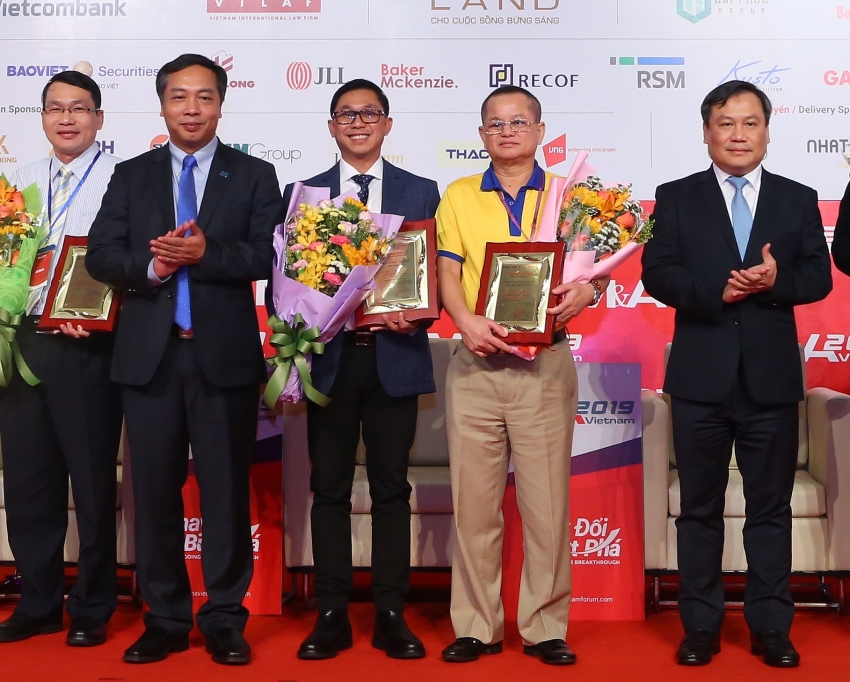Affinity between Minh Phu and Mitsui to raise Vietnamese shrimp
Mitsui spent JPY17 billion (about $153 million) to buy Minh Phu's shares through a private offering and to buy shares from shareholders.
Mitsui first invested in Minh Phu Hau Giang (MPHG) in 2013 and according to Quang, the Japanese investors provided a lot of support to help the Vietnamese company operate optimally.
Mitsui assessed Minh Phu as an enterprise that has strengths in aquaculture, processing, and the distribution of seafood. Minh Phu's products are also diversified with high quality and have been exported to 50 countries around the world. In fact, Minh Phu is currently the leading shrimp exporter in Vietnam, accounting for 20 per cent of the market share and gaining an export turnover of more than $750 million in 2018.
According to the plan, Mitsui has developed initiatives at MPHG, then applied them to the entirety of Minh Phu and effectively took advantage of Mitsui's global sales network to increase sales. For the Japanese market, in particular, Vietnamese shrimp will benefit from the zero tariff rates under the Comprehensive and Progressive Agreement for Trans-Pacific Partnership (CPTPP). This will be a great opportunity as Japan is the second-largest shrimp importer in the world, accounting for about 14 per cent of the total import value with a turnover of about $2.5 billion per year.
Shaking hands with Mitsui, Minh Phu aims to occupy 25 per cent of the global shrimp market in the next 15-20 years (it currently holds 5 per cent). The corporation is focusing on an active raw material strategy with good quality and low cost. Minh Phu will bring high-tech applications to autonomously raise 50 per cent of the shrimp raised in ponds while on the remaining 50 per cent Minh Phu will co-operate with farmers.
| Vietnam M&A Forum explores brand development post-M&A Hot sectors for a breakthrough in M&A Vietnam M&A Forum 2019 awards winners of 2018-2019 Vietnam M&A Forum 2019 opens 11th edition |
The second strategy of Minh Phu focuses on the resonant and varied values derived from organic shrimp products.Shrimp is cultivated in seawater with an ensured and monitored minimum salinity level so that shrimp have a delicious taste, beautiful colour, and high nutritional value.
Mitsui is one of Japan's five largest companies and boasts a strong management system. The affinity between the two big corporations is expected to yield good results, and in the short run, Minh Phu's export turnover will soon the $1 billion milestone.
Minh Phu is implementing a series of co-operation programmes as well as supports farmers to achieve sustainable development. For example, recently a co-operative programme to help 20,000 small-scale Vietnamese shrimp farms adopt practices that will qualify them for Seafood Watch’s Best Choice, a green rating accepted across the globe. The premise is for farmers, processors, buyers, local and national government authorities, NGOs, and other stakeholders to work together on the development of processes so that all participants along the value chain can have a stake in the success of these improvements.
Any farms that do not already hold a recognised eco-certification will go through a three-step verification process. First, after extensive training, the company does a set of audits/assessments, then a second group (independent, trained programme collaborators) does a set, and finally, SGS does a number of full audits.
Results are compared to see if the first party’s audits – those done by Minh Phu – were as thorough and accurate as the third-party ones done by SGS. The third-party auditors will remain involved, but the hope is that, with practice, Minh Phu can perform a higher percentage of the audits in the future, creating a more scalable process.
What the stars mean:
★ Poor ★ ★ Promising ★★★ Good ★★★★ Very good ★★★★★ Exceptional
Related Contents
Latest News
More News
- Dat Bike accelerates sustainable mobility (January 07, 2026 | 15:24)
- Innovation to support modern healthcare development (January 07, 2026 | 10:00)
- Six localities record double-digit growth as regional performance diverges in 2025 (January 06, 2026 | 18:00)
- E-commerce market undergoes transformation amid rising competition and regulation (January 06, 2026 | 17:54)
- Vietnam’s industrial output hits seven-year high in 2025 (January 06, 2026 | 17:47)
- GELEX’s credit rating outlook upgraded to 'Positive' by VIS Rating (January 06, 2026 | 16:49)
- Finance sector lays firm groundwork for 2026 after major reform (January 06, 2026 | 15:30)
- Vietnam’s seafood exports surpass $11 billion in 2025 (January 06, 2026 | 08:51)
- Vietnam GDP posts second-strongest growth since 2011 (January 06, 2026 | 08:35)
- Double-digit GDP growth within reach with shift to higher-value expansion (January 06, 2026 | 08:33)


 Tag:
Tag:
























 Mobile Version
Mobile Version